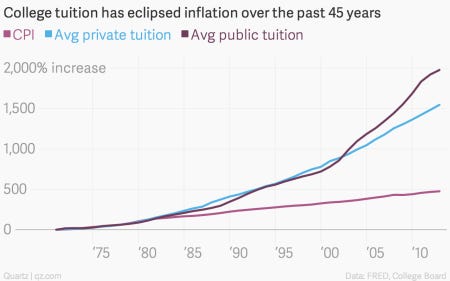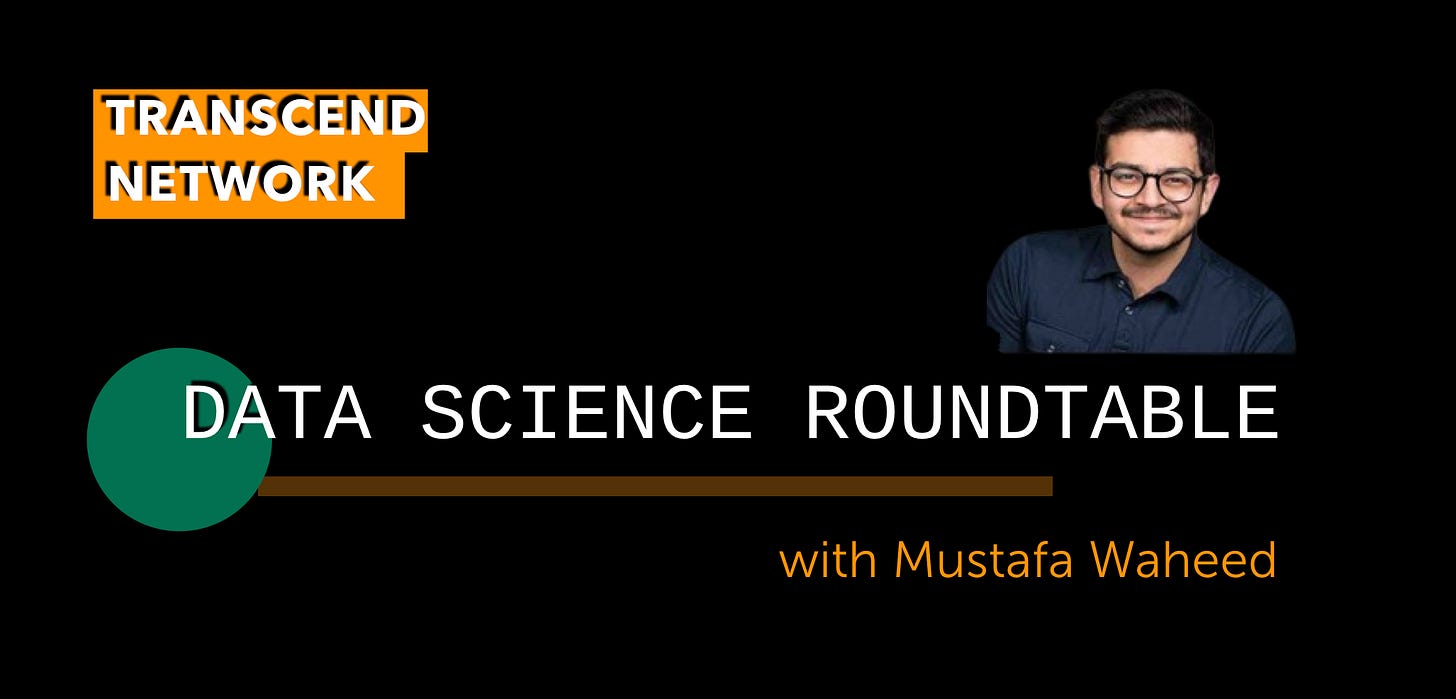The Future of US Higher Ed 🎓 Transcend Newsletter XVII
How universities are moving from learning "factories" to platforms, data science roundtable and our Fellowship applications.
This week we are looking at the Higher Education world in the US - there’s been a lot of analysis of this sector, so we focus on unpacking where it’s going and interesting projects to follow.
👋Looking for opportunities or just want to say hi? Introduce yourself to the community here!

tl;dr: Higher ed’s long-promised unbundling is still in the works, but the actual student experience has already changed greatly. Universities are becoming platforms > factories.
1) Defining Higher Education in the US
Higher Education in the US (defined as the post-secondary education that awards academic degrees) is one of the pillars of the country’s economy: having some of the world's top universities and attracting millions of students, the US has made of higher education a great economic asset. However, higher education is undergoing a massive transition, which will change the way we see college in the US:
The cost of US Higher Ed has skyrocketed...
The overall price of higher education increased 600% between 1980 and 2010, double the rate of inflation in that period (per Ryan Craig's "College Disrupted"), with student debt rising to $1.5T (the size of South Korea's economy).
Despite this financing crisis, attending college still has a significant effect on future student incomes ($17,500 yearly income difference for millennials), especially among top programs, which turned students to loans in order to cover tuition and living costs. This effect on post-graduation income varies widely depending on the program, school and major.

The effect of these loans on students has been widely studied: they affect their financial health for extended periods of time and puts pressure on graduates to get an income earlier in their career (as opposed to building skills for the long run).
... yet student outcomes have not caught up.
Underemployment among college graduates is a rising issue and is affecting higher ed’s perception as a vehicle for social mobility. According to this report, 40% of US recent graduates experience it. Dropout rates, employment readiness, and other alternative measures also account for student outcomes.

2) Why should we care?
This large gap between cost and outcomes is affecting the US economy, even in a time of general economic growth and full employment.
The Kauffman Foundation states that 86% of high school students are "left behind" as they don't set to achieve their educational goals or are underemployed at the end of their education.

The long tail bubble is starting to deflate
The bubble of low-performing schools in the US is starting to deflate.
The first ones to suffer are for-profit schools, which show an alarmingly low effect on income among students. To top it off, an investigation around unethical financing options offered by colleges (aggregating 98,868 complaints) found that for-profit colleges received 98.6% of these complaints.
How long can low-performing universities stick around? There are some answers to this: a study estimated how long it would be before the following colleges are at risk of closing, counting seven colleges (comprising a massive student body) with only 4 to 7 years of runway.
What about college alternatives?
With these market inefficiencies at play, many have argued that alternative education pathways will replace college (“the great college unbundling”), some arguing high schoolers will go directly to work.
However, these closings are still a minority, and among predominantly low performing schools in the country: top schools are going nowhere since they have established strong moats and an accreditation system that acts as a gatekeeper (see #2 in this awesome article).
3) The future of Higher Education
While the long-promised college unbundling hasn’t yet fully realized, the actual student experience has, and technology has played a massive role in that process. To understand the future of higher education, we must understand the role technology can play in solving the existing bottlenecks moving forward, both on the supply and demand for education.
On the supply side, online college is finally a reality in the US: more than 3 million students study fully online (and 29% of graduate students). Additionally, 61% of hiring leaders see credentials earned online as equal to or better than those completed in person. On the demand side, employers seem to be doubling down on educational credentials, which universities are uniquely positioned to offer: 64% of employers agreed that the need for continuous lifelong learning will demand higher levels of education and more credentials.
These are future opportunities for higher education in the US and project in the space.
⛲1) Better online learning environments and experiences (coaching, experiential learning, pathways)
Our thesis is that online, self-directed learning hasn't fully substituted colleges (even though all the content is out there!) because college actually provides great learning environments
Better learning environments will be both physical, like the Shift_Up learning gyms, but also online, like Speckbit’s exploration of community-center learning.
🚡2) More integration of work and school through skill-centric learning
Embedding industry credentials into degree programs, creating more stackable pathways for students through the certificate first model (e.g. BYU Pathways, Pathstream, Foundry College, WGU).
Skill-based hiring will shape the actual learning experience, with projects like ImpactEd connecting the two.
Skills mapping will be central to curricula: WGU’s developing skills maps for each of their programs to update curriculum/assessments in real-time according to industry changes.
🏫3) Universities as learning platforms > learning factories:
Universities will move towards solutions that allow them to provide education at lower costs, and provide everything the learner needs through an open platform solution, rather than a closed factory (creating the content and centralizing the learning).
Video-based classroom products like Minerva Project or MashMe are enabling fully online and hybrid classrooms, leading to programs like Illinois ending their residential MBAs. Other platforms like Aula or Kits are enabling more efficient operations.
External content providers will be increasingly connected to universities (see the growth of the OPM sector), as seen through the 2U acquisition of Trilogy.
The Learner Revolution explains this shift, with programs like Badgr Pathways coordinating multiple providers/issuers towards a degree.
For more on our theses, visit our Open Theses, and check out University, Redefined.
I’m incredibly grateful to Transcend Network friends Tara Baumgarten and Taylor Stockton for their contributions to this analysis!
What do you think? We’d love to get your thoughts, please leave a comment or reply to this email!

☀️We are closing our applications for the W20 Transcend Fellowship, and are excited to announce we are reviewing applications from 20+ countries! The next newsletter will include details on the exciting projects we’ll be working with.
💻How do remote workers make friends? Cadence is the key, says HBR.
🌆This report provides a full cost comparison for startups building a Series A team in Europe and SF. Engineering talent and lower cost of living are the keys to cities like Madrid having a growing startup ecosystem.
🔧Want to break into data science? Looking for interesting projects in the space? Join us on Thursday 5PM PST for an online Data Science roundtable with Mustafa Waheed, from AWS.



My Background: “I'm an early-stage consumer tech investor passionate about building brands solving important problems. My mission is to bring more humanity and creativity to technology and business. If you know a founder rethinking an outdated industry with a combination of design, technology, and brand, hit me up!”
👋Looking for opportunities or want to say hi? Introduce yourself here!


Transcend Network Job Board
We’ve launched our new Job Board (on Notion, where else would we?), and want to share it with the rest of the world.
Here you’ll find openings at some of the most exciting startups building the future of learning and work.
If you have any questions about the roles or see something you are interested in, feel free to let us know!
All the updated job opportunities can be found on our Job Board!
Growth Lead | Customer Support Lead | Partnerships & Community Lead - Eva Tech
Associate Director for Energy - Deep Science Ventures
Microverse - Product Management
Creative Lead - Dalberg Design
Community Manager - Notion
Impact Investing Intern - Kiva
AngelList - Venture Financing Operations
Briter Bridges - Community ManagerAssociate; Expansion and Research
London Interdisciplinary School - Digital Marketing Manager
Laconia - VC Intern
Fill out this form if you are looking to hire or get hired, and check out our job board for updated openings.
Thanks for reading another week! For any feedback, requests or ideas, reply to this email.
Alberto(alberto@transcend-network.com) & Michael (michael@transcend-network.com)


